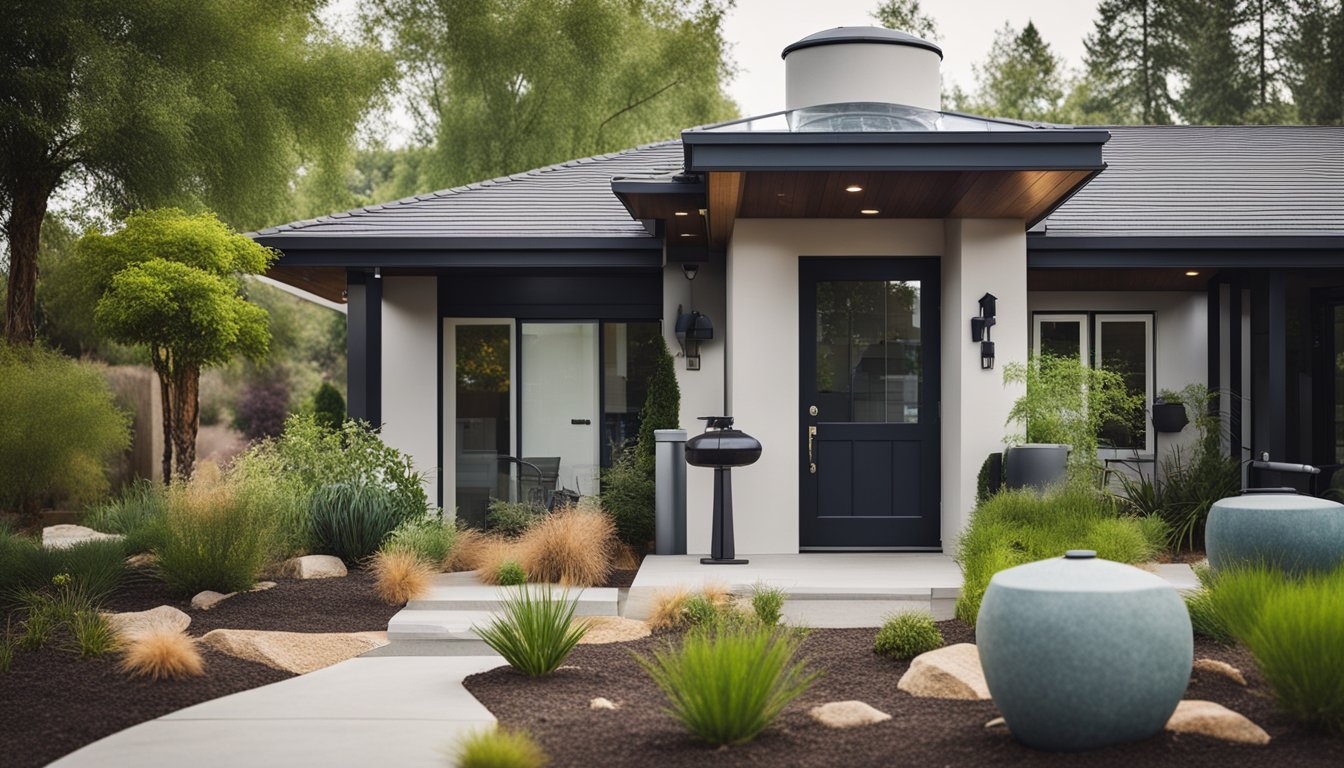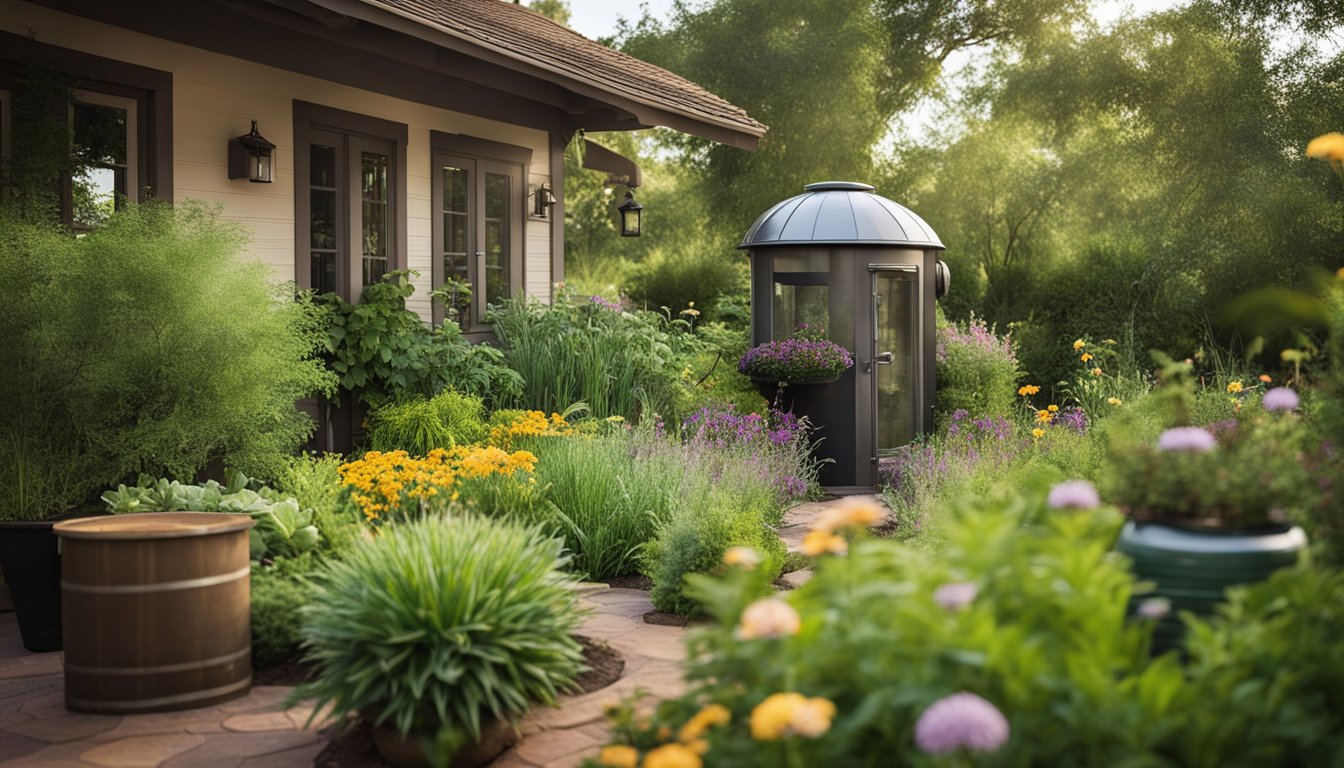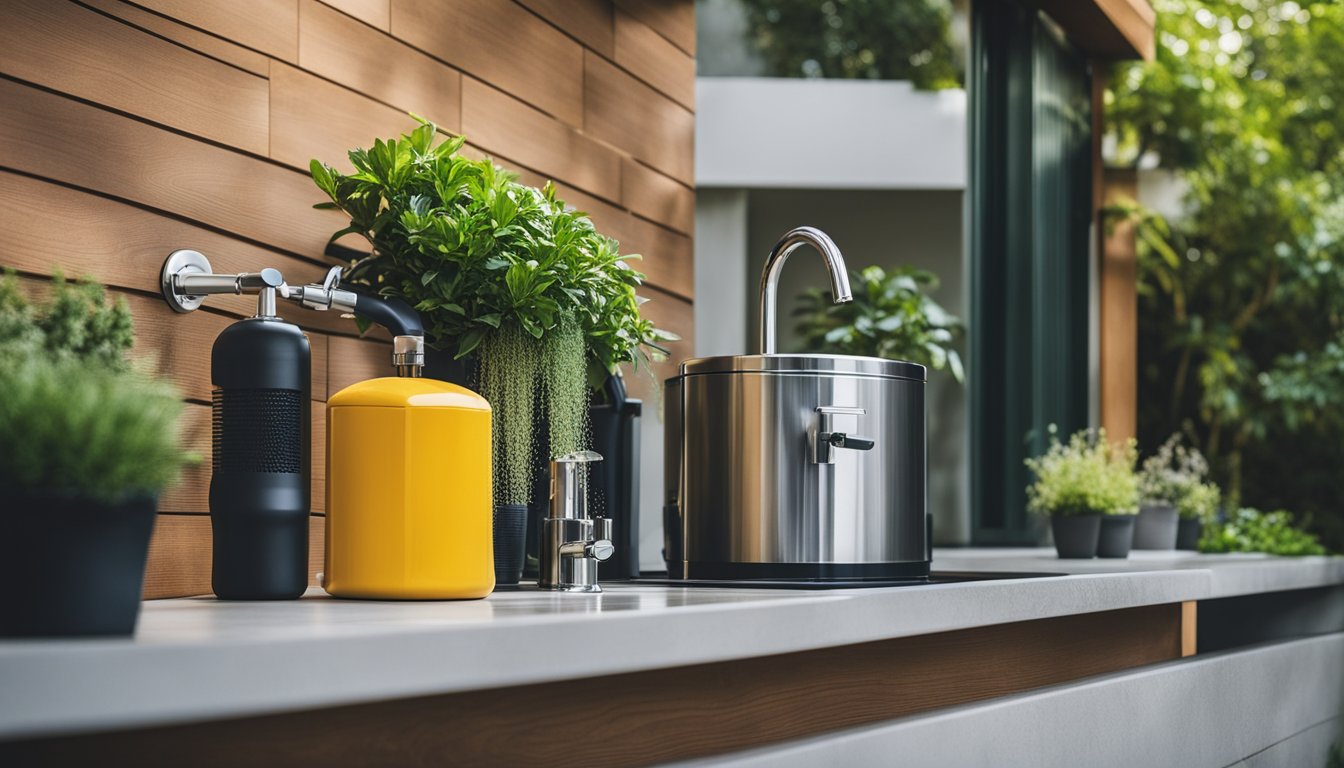Late updated: 07 May 2025 16:05
Written by: Sarah Hollister
Smart Ways To Reduce Water Usage At Home: Effective Tips for Every Household
Taking steps to reduce water usage at home is not only an environmentally conscious decision but also a practical one that can lead to significant cost savings. Highlighting simple yet effective methods, our focus will be on easy-to-integrate practices such as installing water-efficient fixtures and fixing leaks, which can dramatically decrease water consumption.

Moreover, by making small lifestyle changes, like turning off the tap while brushing teeth or opting for shorter showers, we can collectively make a considerable difference. Exploring these strategies gives us an opportunity to contribute positively towards conserving this essential resource.
Exploring water-saving techniques doesn't stop indoors; outdoor practices such as efficient garden watering can also have a meaningful impact. Whether you live in a drought-prone area or are just interested in sustainable living, discovering these smart methods empowers us to be part of the solution.
Key Takeaways
- Prioritise fixing leaks and using water-saving fixtures.
- Adopt new habits like shorter showers and turning off taps.
- Implement efficient garden watering practices to save water outdoors.
Essential Ways To Reduce Water Usage Indoors
Water efficiency is an essential focus in today's households. We can achieve significant savings by upgrading our fixtures, optimising plumbing, and adopting water-saving habits in daily routines.
Upgrade To Water-Saving Fixtures
Installing water-saving fixtures such as low-flow faucets, showerheads, and toilets in our homes significantly reduces water consumption. The WaterSense label identifies products that meet a standard of excellence in water conservation. Low-flow showerheads, for instance, can lower water usage by up to 50%, without sacrificing performance. Similarly, dual-flush toilets offer two flush options: a lower volume for liquid waste and a standard one for solids, using considerably less water per flush.
Adopting these fixtures not only helps save water but also reduces household expenses. Initial investments in smart fixtures quickly pay off through lower utility bills. A water-efficient home can conserve thousands of litres annually, showing that smart investments generate substantial long-term benefits.
Optimise Plumbing Fixtures And Water Pressure
Effective plumbing systems are crucial for optimal water efficiency in our homes. Checking for leaks regularly helps prevent unnecessary water waste. Even small drips can add up to significant losses over time, increasing water bills. Periodically reviewing and maintaining our plumbing fixtures keeps everything running smoothly.
Beyond repairs, optimising water pressure can lead to significant water savings. High pressure often results in excess water flowing freely. By installing pressure-reducing valves, we can maintain functional water flow while simultaneously reducing wastage. Rebates may be available from local councils, making such modifications more affordable and encouraging further conservation efforts.
Adopt Water-Saving Habits In Daily Life
Changes in everyday routines contribute significantly to reducing water usage. Simple habits such as turning off the tap while brushing teeth or shaving can conserve numerous litres each day. Replacing baths with shorter showers also creates substantial water savings. Ensuring dishwashers and washing machines are full before use promotes efficiency, as these appliances typically consume large amounts of water.
Additionally, reconsidering water use with tasks like plant watering can help. Collecting rainwater or using water collected from rinsing vegetables can be an efficient way to nourish household plants. Small, conscious changes to our habits can play a large role in our collective effort to conserve water resources.
Smart Outdoor Strategies To Save Water

Efficient garden watering involves using appropriate techniques, installing drip irrigation systems, and selecting water-efficient plants. These measures not only conserve water but also promote healthy, sustainable outdoor environments.
Implement Efficient Garden Watering Techniques
Watering efficiently is essential for any garden. We should water early in the morning or late in the afternoon to reduce evaporation. By doing this, we ensure more water is absorbed by the soil and less is lost to the atmosphere. Using a broom to clean driveways and patios instead of a hose can save significant amounts of water. Sweeping not only conserves water but also keeps outdoor areas tidy without unnecessary waste.
Mulching beds with organic matter like compost or bark helps retain soil moisture and reduces the need for frequent watering. A taller lawn provides natural shade to the soil, reducing evaporation. Installing rain barrels to collect rainwater for garden use further enhances water conservation efforts.
Install Drip Irrigation Systems
Drip irrigation systems are an effective method to save water, particularly in gardens. These systems deliver water directly to plant roots using a network of tubes and emitters. This targeted approach minimises water waste, ensuring only the necessary amount is used. We can adjust drip systems based on the specific needs of our plants, allowing for a custom watering schedule.
We should regularly inspect our systems for leaks to maintain their efficiency. Replacing damaged parts promptly ensures consistent performance. Another benefit is that drip irrigation reduces weed growth by limiting water to non-target areas, which can help us manage our garden effectively.
Maximise Water Efficiency For Plants
Selecting water-efficient plants can significantly decrease outdoor water usage. Native species or drought-resistant varieties are naturally adapted to local climate conditions and require less watering. By choosing these plants, we create a garden that's both beautiful and environmentally friendly. Grouping plants with similar water needs together simplifies watering routines.
Additionally, adding a layer of mulch around our plants helps retain moisture and limits evaporation. Using water-efficient fixtures, such as hose nozzles with shut-off valves, allows us to control water flow precisely. By embracing these strategies, we foster a healthy, sustainable garden that thrives while conserving water.
Frequently Asked Questions

Water efficiency at home hinges on effective habits, optimising household appliances, and utilising water-saving devices. By familiarising ourselves with these strategies, we can significantly cut down on our water usage and make a positive impact.
What are some effective methods for conserving water in domestic settings?
Effective water conservation methods include installing low-flow showerheads and faucet aerators. These devices help to reduce water flow without compromising performance. Additionally, promptly fixing leaks in pipes or faucets can prevent substantial water wastage.
How can I minimise water consumption in my daily routine?
To minimise daily water consumption, we can turn off the tap when not in use, such as while brushing teeth. Taking shorter showers and being mindful of shower duration also helps. Simple actions like these can save litres of water each day.
In what ways can individuals contribute to water conservation efforts at home?
We can contribute by checking toilets for leaks and avoiding using them as waste bins. Implementing dual flush systems can significantly reduce water used per flush. Additionally, monitoring and adjusting personal usage habits contributes meaningfully to conservation efforts.
What household appliances are the largest consumers of water, and how can their usage be optimised?
Washing machines and toilets are among the largest consumers of household water. Utilising full loads for laundry and opting for energy-efficient models optimises water use. Installing dual flush toilets or conversion kits also reduces water wastage.
Can small changes in water usage habits significantly impact my water bill savings?
Yes, small changes like fixing leaks and using water-efficient fixtures can indeed lead to noticeable savings on your water bill. Over time, these small, consistent efforts accumulate, resulting in reduced overall expenditures on water utilities.
Which water-saving devices offer the best performance for home use?
Low-flow showerheads and faucet aerators are particularly effective, offering significant savings with minimal lifestyle adjustments. Water-efficient appliances and dual flush systems can further enhance conservation efforts, making these devices excellent investments for sustainable usage.
